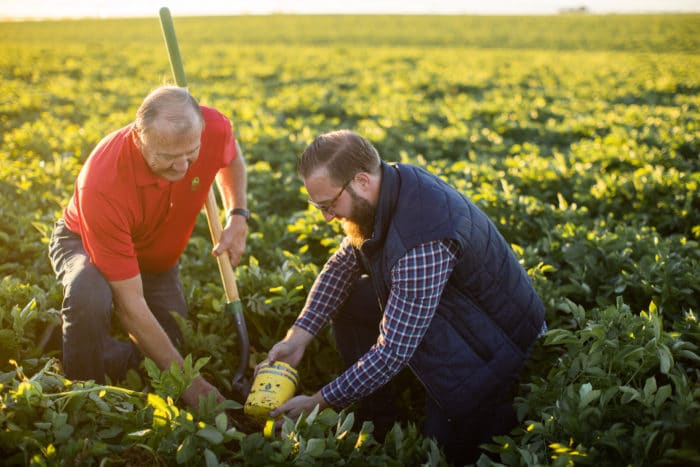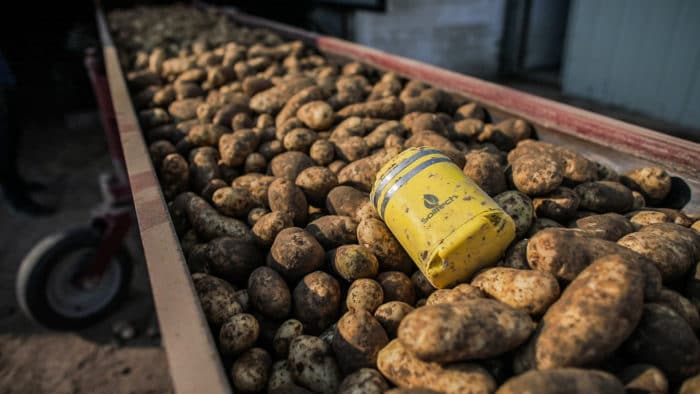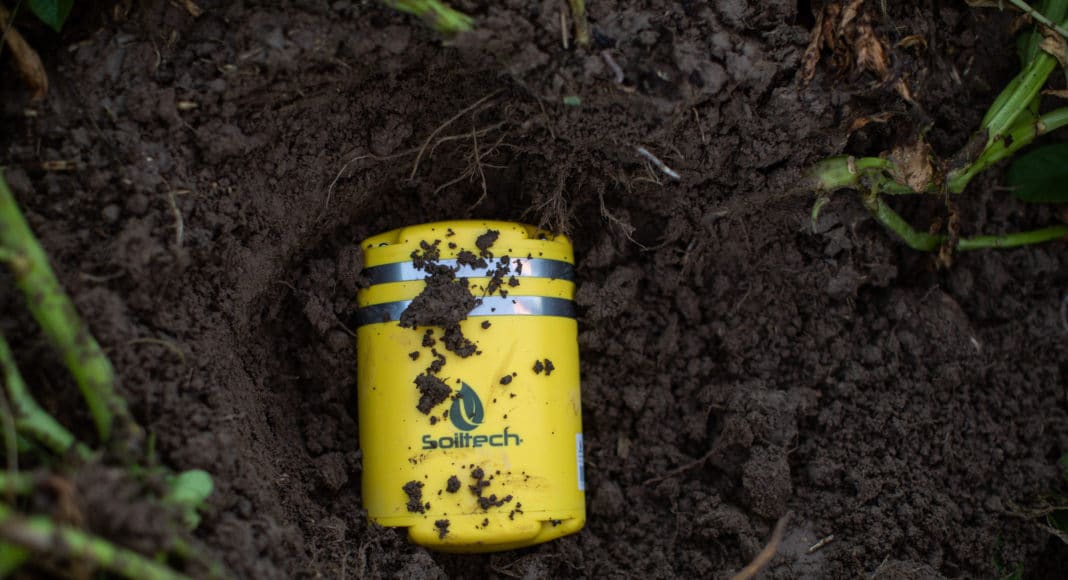Soiltech Wireless has a soil moisture sensor which is cheaper than competitors and can do more than just monitor water.
Ehsan Soltan may not have an ag background, but he did work in tech and spend time in his wife’s home state of Idaho where her mother worked at a potato packing plant.
“I got to meet a lot of growers, agronomists, crop consultants. I just learned about their life and about some of their pain points. I decided that I could build a product for them, because it seemed like there was a big gap in the market,” Soltan, CEO and founder of Soiltech Wireless, explains in a phone interview.
Growers told Soltan of how they would drive hundreds of miles a day to check soil moisture in their fields, and while there were soil moisture probes available, they were costly and not the most reliable devices. Soltan teamed up with a farmer to combine his tech knowledge and the farmer’s ag expertise in order to develop an automatic, cost-effective wireless moisture detector in 2017 — the Soiltech Wireless sensor.
The Soiltech sensor is a yellow device which is buried under the soil at the start of the growing season with the logo facing towards the sky. It has a moisture, temperature, humidity, GPS and bruising sensors on it, the sensors are located in the silver bands surrounding the device. Throughout the growing season, it sends data back to a phone application over a low power cellular data called LTE Cat-M1 and NB-IoT — which can operate at significant distances from cellphone towers.

At the end of the season, the device is harvested with the rest of the potato crop and goes into storage to monitor the crop until it’s shipped. If it’s “planted” in a non-potato field the Soiltech sensor can be dug up before or after harvest. It holds a charge throughout the season and needs to be recharged only once each year, with a full charge taking 12 hours to complete.
The sensor requires an annual subscription of US$79 for the data services. Each device costs US$420 to buy — the first-year costs $499 for both the physical device and data subscription.
Randy Bauscher with B&H Farming in south central Idaho started using Soiltech Wireless in 2018 after being approached by Soltan, who had heard about him through a mutual friend. Bauscher had used other soil moisture probes over the years, but always found they were lacking in data or didn’t work correctly.
Potato Grower Impressed by Soiltech Sensor
The first year Bauscher used around five of the Soiltech sensors and was impressed by the results. Over the next few growing seasons, he continued increasing the number of devices used and expanded the devices into other fields on his farm. This year he plans to have at least one device in each field on his farm, with some having multiples.
“The first thing that impressed me was they worked, and they read out consistently. We kind of truthed them with my water consultants’ guy and so when we got a reading, we felt confident that it was correct,” Bauscher says in a phone interview.

Last year, Soiltech Wireless had its first large-scale commercial launch across the United States with expansion outside to Canada and into South America and Europe happening this year. The devices are available directly through Soiltech Wireless with some agronomists and dealers who Soiltech Wireless works with also selling them.
Moving forward, Soiltech Wireless plans to add more software automation features, which will be able to be updated remotely on devices. They are also planning on adding additional sensors to the devices, such as Co2, EC and Ph monitors. Soiltech Wireless is also looking at partnering with pivot companies to connect data for irrigation.
“We’re not in the habit of restricting data or holding it back. We want to work with pivot providers to help growers automate their operation, we want to work with storage providers to allow them to see what is going on in their cellars,” Soltan explains. “We want to make it simple, so that growers don’t have to log into 25 different apps — they can log into one and see everything.”











